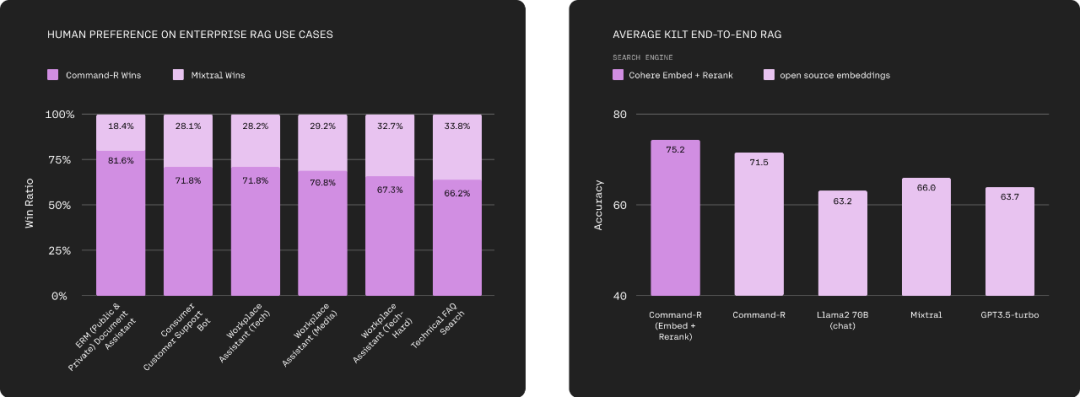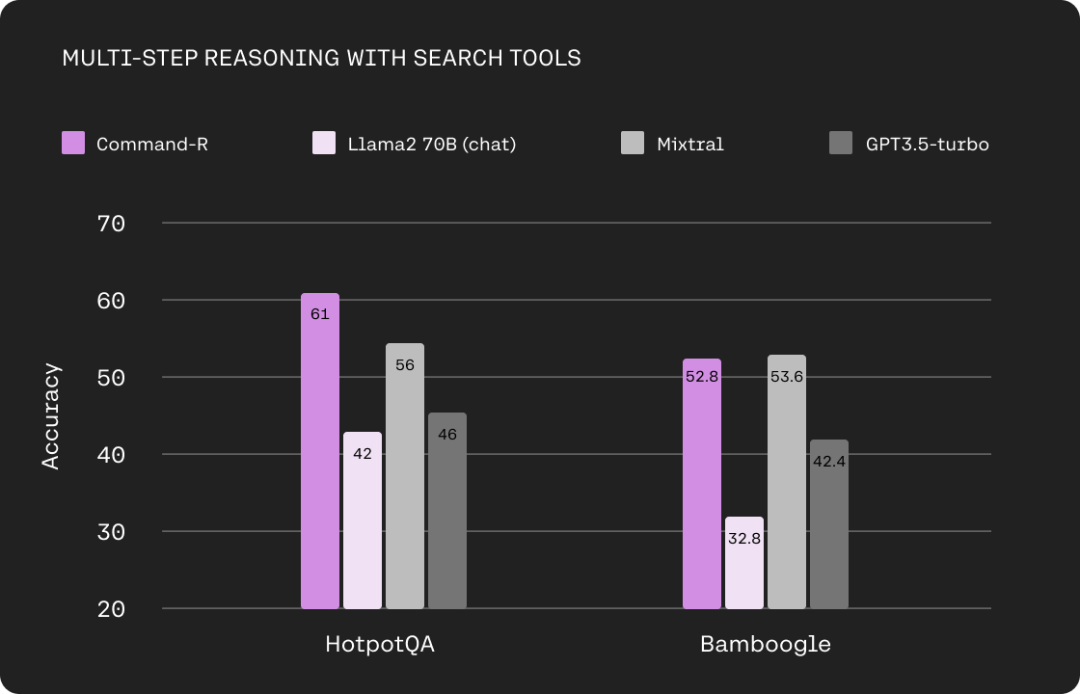
Today, Cohere, an artificial intelligence startup co-founded by Aidan Gomez, one of the authors of Transformer, ushered in the release of its own large model.
Cohere’s latest released model is named “Command-R”, has 35B parameters and is designed to handle large-scale production workloads. This model falls into the "scalable" category, with a balance of high efficiency and high accuracy, helping enterprise users move beyond proof-of-concept and into production.

Command-R is a generative model optimized for retrieval-augmented generation (RAG) and other long-context tasks. By combining external APIs and tools, this model aims to improve the performance of RAG applications. It works with industry-leading embedding and reordering models to deliver outstanding performance and best-in-class integration capabilities for enterprise use cases.
Command-R adopts an optimized transformer architecture and is an autoregressive language model. After pre-training is completed, the model ensures consistency with human preferences through supervised fine-tuning (SFT) and preference training to achieve better usefulness and safety.
Specifically, Command-R has the following functional characteristics:
Command-R is currently available Available on Cohere’s managed API, with plans to launch on major cloud providers soon. This release is the first in a series of models designed to advance capabilities critical to enterprise mass adoption.
Currently, Cohere has opened model weights on Huggingface.

Huggingface Address: https://huggingface.co/CohereForAI/c4ai-command-r-v01
Retrieval augmented generation (RAG) has become a key pattern in the deployment of large language models. With RAG, companies can give models access to private knowledge that would otherwise be unavailable, search private databases, and use relevant information to form responses, significantly increasing accuracy and usefulness. The key components of RAG are:
For retrieval, Cohere’s Embed model improves contextual and semantic understanding by searching millions or even billions of documents, significantly increasing the practicality and accuracy of the retrieval step. . At the same time, Cohere’s Rerank model helps further increase the value of retrieved information, optimizing results for custom metrics such as relevance and personalization.
For enhanced generation, by identifying the most relevant information, Command-R can summarize, analyze, and package this information, and help employees improve work efficiency or create new product experiences. Command-R is unique in that the model's output comes with clear citations, reducing the risk of hallucinations and rendering more context from the source material.
Even without using its own Embed and Rerank models, Command-R outperforms other models in the scalable generative model category. But when used together, the lead extends significantly, enabling higher performance in more complex domains.
The picture on the left below shows Command-R and Mixtral conducting a Head-to-Head overall human preference assessment on a series of enterprise-related RAG applications, fully considering fluency and answers. Usefulness and citations. The right side of the figure shows the comparison results of Command-R (Embed Rerank), Command-R and Llama 2 70B (chat), Mixtral, GPT3.5-Turbo and other models on benchmarks such as Natural Questions, TriviaQA and HotpotQA. Cohere's big model achieves the lead.

The large language model should be the core inference engine that can automatically perform tasks and take actual actions, not just extract and generate text machine. Command-R achieves this goal by using tools (APIs) such as code interpreters and other user-defined tools that enable models to automate highly complex tasks.
Tool Use feature enables enterprise developers to turn Command-R into an engine to support the use of "internal infrastructure such as databases and software tools" as well as "external infrastructure such as CRM, search engines, etc." Tools for the automation of tasks and workflows. This allows us to automate time-consuming manual tasks that span multiple systems and require complex reasoning and decision-making.
The picture below shows the comparison of multi-step reasoning capabilities between Command-R and Llama 2 70B (chat), Mixtral, and GPT3.5-turbo when using search tools. The data sets used here are HotpotQA and Bamboogle.

Command-R model is good at 10 major business languages around the world, including English, French, Spanish, Italian, German, Portuguese, Japanese, Korean, Arabic and Chinese.
Additionally, Cohere’s Embed and Rerank models natively support over 100 languages. This enables users to draw answers from a wide range of data sources, delivering clear and accurate conversations in their native language, regardless of language.
The following figure shows the comparison between Command-R and Llama 2 70B (chat), Mixtral, GPT3.5-turbo on multi-language MMLU and FLORES.

Command-R supports longer Context window - 128k tokens. The upgrade also reduces the price of Cohere’s managed APIs and significantly increases the efficiency of Cohere private cloud deployments. By combining a longer context window with cheaper pricing, Command-R unlocks RAG use cases where additional context can significantly improve performance.

The specific pricing is as follows, where 1 million input tokens for the Command version cost 1 USD, 1 million output tokens cost 2 USD; the Command-R version costs 1 million input tokens USD 0.5, USD 1.5 for 1 million output tokens.

Soon, Cohere will also release a short technical report showing more model details.

Blog address: https://txt.cohere.com/command-r/
The above is the detailed content of With 35 billion parameters and open weights, the author of Transformer launched a new large model after starting his own business.. For more information, please follow other related articles on the PHP Chinese website!
 How to bind data in dropdownlist
How to bind data in dropdownlist
 Introduction to the meaning of javascript
Introduction to the meaning of javascript
 The difference between Hongmeng system and Android system
The difference between Hongmeng system and Android system
 clonenode usage
clonenode usage
 How to open ofd file
How to open ofd file
 What are the applications of the Internet of Things?
What are the applications of the Internet of Things?
 Detailed explanation of onbeforeunload event
Detailed explanation of onbeforeunload event
 Introduction to carriage return and line feed characters in java
Introduction to carriage return and line feed characters in java




